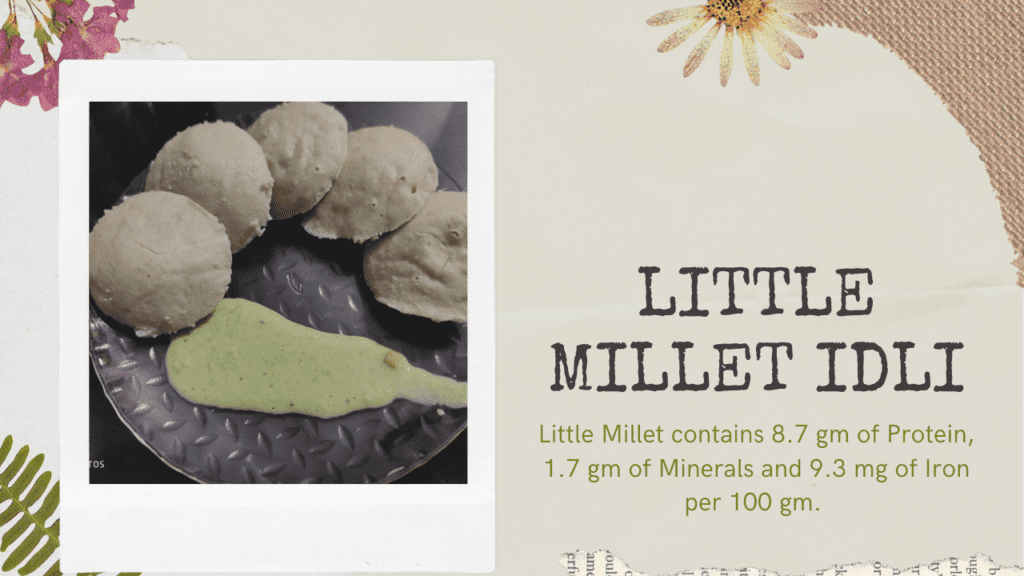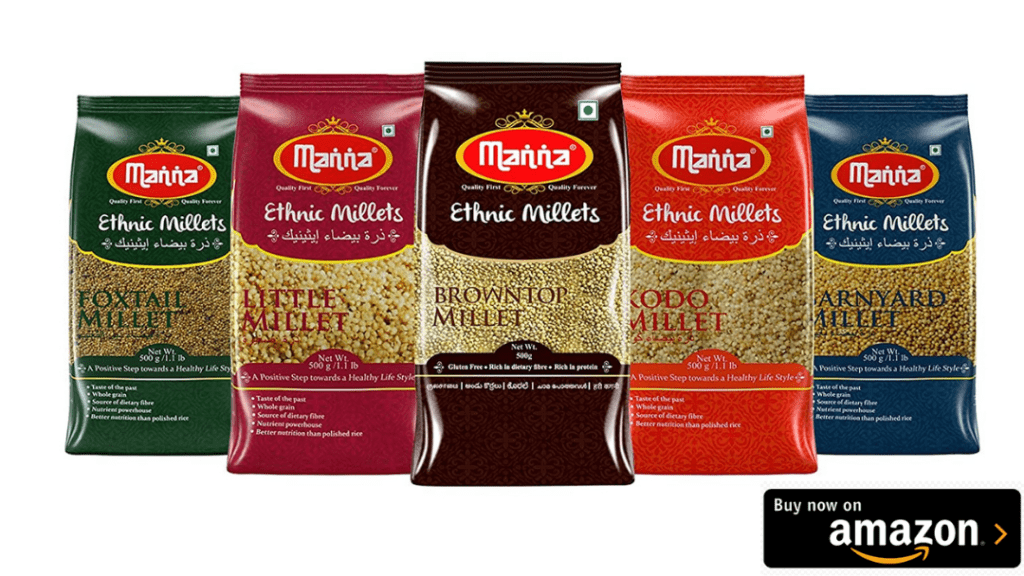Table of Contents
Millets for Diabetes:
It was the day when my mother visited a doctor for her eye operation. The doctor asked the first question ”Do you have diabetes”?
Then I took my mother for a blood sugar test and it was beyond 200 after food. The doctor denied doing the operation and advised me to reduce the blood sugar level to 140 to 150. The situation was a challenge for me and my mother.
From that day, Millets were part of regular diet of my mother. Within 30 days, the sugar level reduced to 150. Really the doctor was surprised to see the results and the eye operation was successful.
From that day, I got confidence and belief that Millets are miracles. I strongly say ”Millets for Diabetes”.
Today, I take this opportunity to make you understand and will cover all aspects related to Millets for Diabetes.
Millets play an important role in controlling and managing the blood sugar level in our bodies. Millets have a low glycemic index because of their high fiber content. If you include millets in your regular diet, the results will be in front of your eyes.
Generally, our food should be more diverse. No doubt we take pulses, vegetables, and fruits but we have given more preference to wheat and rice. We have forgotten an ancient grain ”Millets” that was part of most of the people in India.
Now, let us go into details about Millets.
What is Millet?
Millets are small-grained cereal crops that are highly nutritious and are hardy rainfed crops grown in less fertile and marginal lands with very low inputs. Most of the millets are native to India and nowadays it is called Nutri-Cereals. Based on its grain size and area under production it is categorized into 2 types, i.e. Major and Minor Millets.
Under Major millets, we have Sorghum(Jowar) and Pearl Millet (Bajra), and under Minor Millets, we have Finger Millet (Ragi), Foxtail Millet (Italian Millet), Little Millet (Kutki), Barnyard Millet, Proso Millet, Kodo Millet, and Browntop Millet.
To give you a better exposure to the millet grains’ shape, size, and color, let us watch the video below:
Millets are known by different names in different states. So, to make you acquainted with the names of millets you can go through this article ”Millets name in different languages”.
Why we are talking all about Millets and how are Millets associated with Diabetes? Let me give some glimpses of the Status of diabetes in India and around the globe.
Status of Diabetes in India and around the globe:
In India, there are 77 million people who are affected by diabetes which is the second-highest in the world. As per the estimated report(2019) by International Diabetes Federation, there are 463 million people affected by diabetes in the world and you will be surprised to know that 10% of global health expenditure is spent on diabetes.
Scientific study on Millets for Diabetes:
Evidence is a must for every statement. Recently a systematic review and meta-analysis of the potential of Millets for managing and reducing the risk of developing diabetes were done by a team of experts from different countries. This analysis was done across different types of millets and the forms of processing and cooking.
Long-term millet consumption showed a reduction in HbA1c, which is lower than the rice-based diet.
This meta-analysis confirmed that the millets evaluated have strong potential in dietary management and prevention of diabetes. To know more about this systematic review – Click here.
A study was conducted by M V Hospital with 105 patients diagnosed with type-2 diabetes. They were grouped into two groups one group was given rice-based dosas and the other with Foxtail Millet dosas. It showed that in patients fed with millet-based dosas, the blood sugar level came down significantly. This is due to the low glycemic index of foxtail millet.
This gives us a clear understanding that Diabetes is a global emergency and Millets have the potential to manage diabetes now let us see the benefits of millets for diabetes.
Benefits of Millets for Diabetes:
- Millets have a low glycemic index (GI) which means it slows down the absorption of sugar in the blood of the human body instead of rushing quickly as in the case of rice.
- It takes more time for digestion due to the presence of high dietary fiber.
- It keeps satiated for a longer time and doesn’t feel a hunger pang between meals.
- Millets are composed of complex carbohydrates which digest slowly in the body.
Types of Millets for Diabetes:
| Sl.No. | Types of Millets | Carbohydrates | Fiber | C/F Ratio |
| 1. | Barnyard Millet | 65.6 | 13.6 | 4.82 |
| 2. | Browntop Millet | 61.37 | 12.5 | 4.90 |
| 3. | Foxtail Millet | 60.2 | 6.7 | 8.98 |
| 4. | Kodo Millet | 66.2 | 5.2 | 12.73 |
| 5. | Little Millet | 65.6 | 7.6 | 8.63 |
Looking into the above data that is compiled from the study conducted by the National Institute of Nutrition, Hyderabad, we can choose the best 5 millets for diabetes are Barnyard Millet, Browntop Millet, Foxtail Millet, Kodo Millet, and Little Millet.
1. Barnyard Millet:
Protein, dietary fiber, calcium, phosphorus, magnesium, zinc, iron, thiamine, riboflavin, niacin, and folic acid are all abundant in Barnyard millet. It is a superb grain because of the phytochemicals and phenolic components that enhance its antioxidant activity.
2. Browntop Millet:
In terms of nutrients, Browntop Millet is superior to wheat and rice. In addition to many other vital minerals, it is high in fiber, iron, calcium, potassium, and magnesium. Per 100 grams of grain, browntop millet contains rich protein (11.5 g), a good quantity of fiber (12.5 g), minerals (4.2 g), iron (0.65 mg), and calcium (0.01 mg).
3. Foxtail Millet:
For every 100 grams of foxtail millet, there are significant amounts of protein (12.3 g), fat (4.3 g), crude fiber (8 g), carbohydrates (60.9 g), and minerals such as iron (2.8 g), zinc (2.4 g), magnesium (81 mg), and potassium (250 mg).
Moreover, it has phosphorus (290 mg), calcium (31 mg), amylose (17.5%), and amylopectin (82.5%). The amino acids arginine, histidine, lysine, tryptophan, phenylalanine, tyrosine, methionine, cystine, leucine, isoleucine, and valine are all balanced in foxtail millet. A good profile of vitamins, including thiamine (0.59 mg), niacin (3.2 mg), riboflavin (0.11 mg), folic acid (15 mg), vitamin A (32 mg), vitamin B5 (0.82 mg), and vitamin E (31 mg), can also be found in foxtail millet.
4. Kodo Millet:
Vitamins, minerals, and phytochemicals are abundant in Kodo Millet. The leucine-to-isoleucine ratio is roughly 2.0, and it is also high in sulfur-containing amino acids, lysine, threonine, valine, and other necessary amino acids (Ravindram, 1992, Antony et al, 1996). Kodo millet contains high levels of calcium (15.27 g), magnesium (122 mg), phosphorus (101 mg), zinc (1.65 mg), and vitamin B3 and B6 in 100g.
5. Little Millet:
Protein (10.13 g), dietary fiber (7.72 g), carbs (65.55 g), iron (1.26 mg), phosphorus (130 mg/g), and magnesium (91.41 mg) per 100 g are all abundant in little millet.
Amino acids are also present in Little Millet in a balanced ratio. It has high levels of cysteine, lysine, and methionine.
A wise mix of pulses and little millet would give you high-quality protein because pulses lack methionine and cysteine, which little millet is rich in.
How to use Millets for Diabetes:
Cooking with millets is simple and easy. When I was doing my project on ”Utilisation of Finger Millet in Nutritional Security” in Koraput, Odisha could find a lot of traditional millet recipes of tribals. They still possess the skill of cooking with millets. With millets, we can make different breakfast, lunch, and dinner recipes.
The two important things to note are that we should always soak millets for at least 6-8 hours. Soaking of millets breaks down the phytic acid and becomes easy for digestion. The second thing is going with the measurement of grains and water.
Recipes with Millets for Diabetes:
Millets are low-moderate GI foods that can help in the control and prevention of type 2 diabetes. We need to focus on a balanced diet which contains millets. In my experience, taking millets occasionally does not have much effect on the control of diabetes rather include millets in daily diet.
It can be included by making different recipes from breakfast to dinner. Let me give you some of the millet recipes that you can include in breakfast, Lunch, and dinner.
| Meal Pattern | Millet Recipes |
| Breakfast | Millet Porridge, Millet Upma, Millet Dosa, Millet Idli |
| Lunch | Cooked Millet Rice, Millet Pulao, Millet Khichdi |
| Dinner | Millet Roti |
Always include pulses and vegetables and make it a balanced diet.
Millet Recipes for Breakfast:
- Start your day with Delicious Millet Porridge Recipe made with almond milk
- Delicious Kodo Millet Idli Recipe for Breakfast – Step by step photos
For breakfast, you can make Millet Upma with Barnyard Millet. The specialty of this recipe is that I have used an earthen pot to make it.
Similarly, we can take other millets like Foxtail Millet and Little Millet to make upma.

Millet Recipes for Lunch:
- How to Make Healthy and Nutritious Kodo Millet Khichdi Recipe at Home
- Special Yummy Millet Pulao Recipe
Story of Millets for Diabetes:
The recent story of Lata Ramaswamy, a Gurugram-based teacher aged 67 shared her Millet journey, where she mentioned how millets played an important role in controlling her blood sugar levels. To read her story- Click here.
Where to buy Millets for Diabetes:
It is always advisable to go for minimally processed millets where the outer husk is removed without losing the bran layer so that the nutrients remain intact. Always prefer unpolished millets. The bran layer contains important minerals, vitamins, fiber, and antioxidants. Completely removing the bran will result in the deterioration of nutrients.

Conclusion:
Millets are beneficial in managing and controlling diabetes. We can also use millets for non-diabetic people as a preventive approach. So, selecting the appropriate millets is very important in managing diabetes. Millets should be included in the regular diet for better results.
I hope this article on ”Millets for Diabetes” was helpful for you. Please give your valuable feedback and suggestions in the comment section below and don’t forget to tick the ”Notify me of new posts by email” so that you never miss my future posts.
Author: Tapas Chandra Roy, A Certified Farm Advisor on Millets, ‘Promoting Millets from Farm to Plate’ and an Author of the book -” Millet Business Ideas-Empowering Millet Startups”. In a mission to take the forgotten grains- Millets to Millions. To remain updated on my blogs on Millets please subscribe to my newsletter and for any queries please feel free to write to [email protected]



Very nice and useful article.The hope for the diabetic patients.
We want to start millet business, online, retail and wholesale in delhi in our brand name. Need best suppliers or dire t farmers
MILLETS FOOD IS VERY MUCH INTEREST TO PEOPLE OF TRADITION IN INDIA.
EV ERY BODY LIKING TO EAT IN DIFFERENCT RECIEPS. I MYSELF WANT TO START
SMALL BUSINESS AT OUR RESIDENCY LOCATIONS WITH KNOWLEDGE PEOPLE
TO BUY IT. RAMANA HYDERABAD-500080,mOBILE NO:7675910450, MAIL ID:
[email protected] .
Very informative and useful article .
Thank you so much!!!